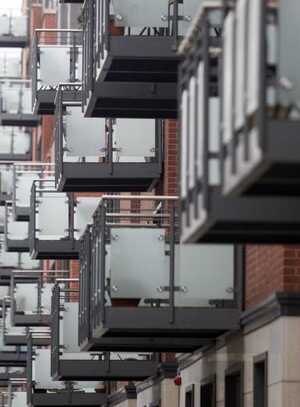Further to issues at the Longboat Quay complex in Dublin, where apartment owners may be forced to evacuate because the complex has failed to meet fire safety standards, a commenter asked:
“Could the directors of the development company (Gendsong Limited) not be guilty of fraud in respect of the construction and/or certification of Longboat Quay apartments, now exposed as being in breach of the Fire Safety Regulations?”
We asked Legal Coffee Drinker what’s it’s all about?
Too busy for a ‘chat’, LCD penned the following:
Under company law, a company is regarded as separate from its directors and shareholders. That means that, normally, its directors are not liable for wrongs committed by the company or its agents. The company itself can be sued, but if it’s broke, that means that it has no money to pay in compensation. The fact that Gendsong Limited is now in receivership makes it unlikely that it has substantial assets.
There are however exceptional cases in which a director can be held liable for the debts of a company, or sued for damages as a result of actions committed by it.
The first of these is under Section 610 of the Companies Act 2014 (previously contained in the Companies Act 1990). This provides that a receiver, or liquidator, or creditor, may bring proceedings in the High Court against a director or former director of a company which is in the course of being wound up, where it appears that that person was, while a director of the company, knowingly a party to the carrying on of any business of the company in a reckless manner, or with intent to defraud creditors, or for any fraudulent purpose. If they succeed, the director will be held personally liable for the debts of the company.
In addition, Section 818 of the Companies Act 2014 (also previously contained in the Companies Act 1990) provides that the Director of Corporate Enforcement, a liquidator or a receiver of an insolvent company may apply to the High Court to have its directors restricted from acting as company director unless the company in respect of which they are director has a substantial amount of financing. If granted, the restriction normally lasts for a period of 5 years.
Also, there is authority [Invertec Ltd v De Mol Holding BV and Another [2009] EWHC 2471 (Ch)] that a director may be held liable at common law for fraudulent misrepresentations made by them on behalf of the company. This is English authority but there appears no reason why it would not be followed in Ireland, although it applies in exceptional cases only.
Gendsong is now in receivership and it would be interesting to know whether or not the receiver, or the Director of Corporate Enforcement, have applied or are contemplating applying for a restriction order against its directors.
It would be also interesting to know whether there are any plans to put Gendsong into liquidation, so as to raise the possibility of an application for a restriction order. A resident, who has obtained a judgment against the company, would be deemed its creditor for the purposes of company law, and as such would be entitled both to have the company, if insolvent, liquidated and subsequently bring a claim to have the directors held personally liable for its debts in circumstances of reckless or fraudulent trading as defined above.
It’s possible that directors of Gendsong may seek to claim they relied on the architect who designed and certified the development. The question of course is whether it was reasonable for them to so rely or if they knew, or should have known, that the Fire Safety Certificate provided was wrong.
The residents may also have an action against the architect in negligence. Whether or not it is worth taking such a case depends on his assets and whether or not he is covered by insurance. Complaints may also be made to the professional bodies in the countries in which he carries on business, with a view to have him excluded from practice in those countries.
Earlier: Different Strokes Different Volks
Previously: How Many More Longboats
(RollingNews.ie)








Any consideration of the subcontractor who would have carried out the actual construction project? Can there be fraud on the part of the development company where they were in fact misled by a subcontractor cutting corners?*
*in no way am I alleging that this was the case in this instance.
Going after the architect reminds me of this…
https://www.broadsheet.ie/2012/05/22/an-open-cartoon-to-phil-hogan-from-an-architect/
I just want to say that I think Legal Coffee Drinker rocks!
the last two paragraphs in this lead me to believe Legal Coffee Drinker does not understand the legal difference between ‘design’ and ‘construction,’ and does not understand how buildings are certified, then or now – why broadsheet think it a good idea to have an anonymous ‘expert’ inform the public on legal matters is beyond me, why not have another opinion for balance, you could call it ‘random barstool mouthpiece’
Legal Tea Drinker, if you will
In the interest of editorial balance: Legal Kool Aid Drinker
Brownbull – What you’ve just said is one of the most insanely idiotic things I have ever heard. At no point in your rambling, incoherent response were you even close to anything that could be considered a rational thought. Everyone on broadsheet is now dumber for having read it. I award you zero points, and may God have mercy on your soul.
brownbull there is a term called ‘vicarious liability’ that covers them all I beleive
Joint and several liability likely applies but that is not what I have issue with. LCD states ‘directors of Gendsong may seek to claim they relied on the architect who designed and certified the development. The question of course is whether it was reasonable for them to so rely or if they knew, or should have known, that the Fire Safety Certificate provided was wrong.’ This statement makes clear to me that LCD does not understand how buildings were ‘certified’ at that time, as there were no certificates of compliance with Building Regulations issued upon completion, only opinions on compliance, which did not necessarily require inspection during the works. Also LCD does not understand that a Fire Safety Certificate (FSC) is obtained before construction and the building is required to be constructed in compliance with the certificate – to simplify – the Fire Safety Certificate is not wrong, the building is wrong as it does not comply with the Fire Safety Certificate, the Builder/Developer failed to construct the development in compliance with the Fire Safety Certificate
Ah, interesting, as an apartment owner I have been wondering as to the practices of certification / validation that buildings were constructed per specifications and met relevant compliance and regulatory requirements. Mildly worrying that it would appear to have been best intentions and not properly independently or externally validated.
You’re wrong brownbull. The opinions you refer to specifically state that they are relying on confirmations provided by various contractors and therein are the certificates.
Depending on the wording of any confirmations given, a contractor may have put their neck on the line, but they are confirmations for the purposes of forming a professional opinion, not certificates. The opinion on compliance is not a certification of compliance, and the signatory would have been able to condition it in a number of ways to limit their liability. The opinion on compliance could be provided without inspections during the works, and meant very little as a result, and this was the typical avenue taken by builders/developers during the boom. The majority of Architects would have preferred to provide a full inspection service during the works and an opinion on compliance backed up by this service upon completion but their services were typically dispensed of by builder/developers following the planning process.
The architect (or ‘an’ architect) is required to provide a certificate of compliance in order for the building to be commissioned… however, these certificates are worded in a way that removes all responsibility from the architect…
The architects do however charge a significant fee for these meaningless peices of paper…
If the insurance companies and the local authorities are going to demand that letters of compliance are provided, and the architects are paid well to produce them, well then they should be held liable if the building is non compliant…
Spider the forms are only worth what they say, and they say something along the lines of ‘I wasn’t involved, I was only brought in at the end to have a quick look and I can’t see anything wrong and the lads all tell me everything is grand,’ and it may have been possible to say that about defective buildings in good sense because the defects were concealed. You say the forms are worded to remove responsibility from the architect, but the architect has no responsibility if they were not involved in the construction, if they were not paid and empowered to provide inspections. It is not for an Architect, Engineer or Surveyor to sign a form for a big cheque at the end of construction by the builder to indemnify the Builder when they has no previous invovlement, it is not an insurance service. One can only reasonably and truthfully certify if they have provided an appropriate level of inspections during the work, otherwise they do not know and to certify would be misleading, maybe even fraudulent – in essence there is no certification for these developments because that is our system
‘random barstool mouthpiece’
surely you mean ‘The Comments Section’?
I was wondering how long it would take for the Good people of Ireland to realise that a vast quantity of the buildings ‘thrown up’ during the boom are seriously substandard. The thing to watch for now is how long the process of investigation can be drawn out before any pronouncements are delivered on this.
it is important that the developers get a bit more time because some of them havent wound up the companies responsible for this mess, and therefore may still bear some personal liability, and we cant have that now.